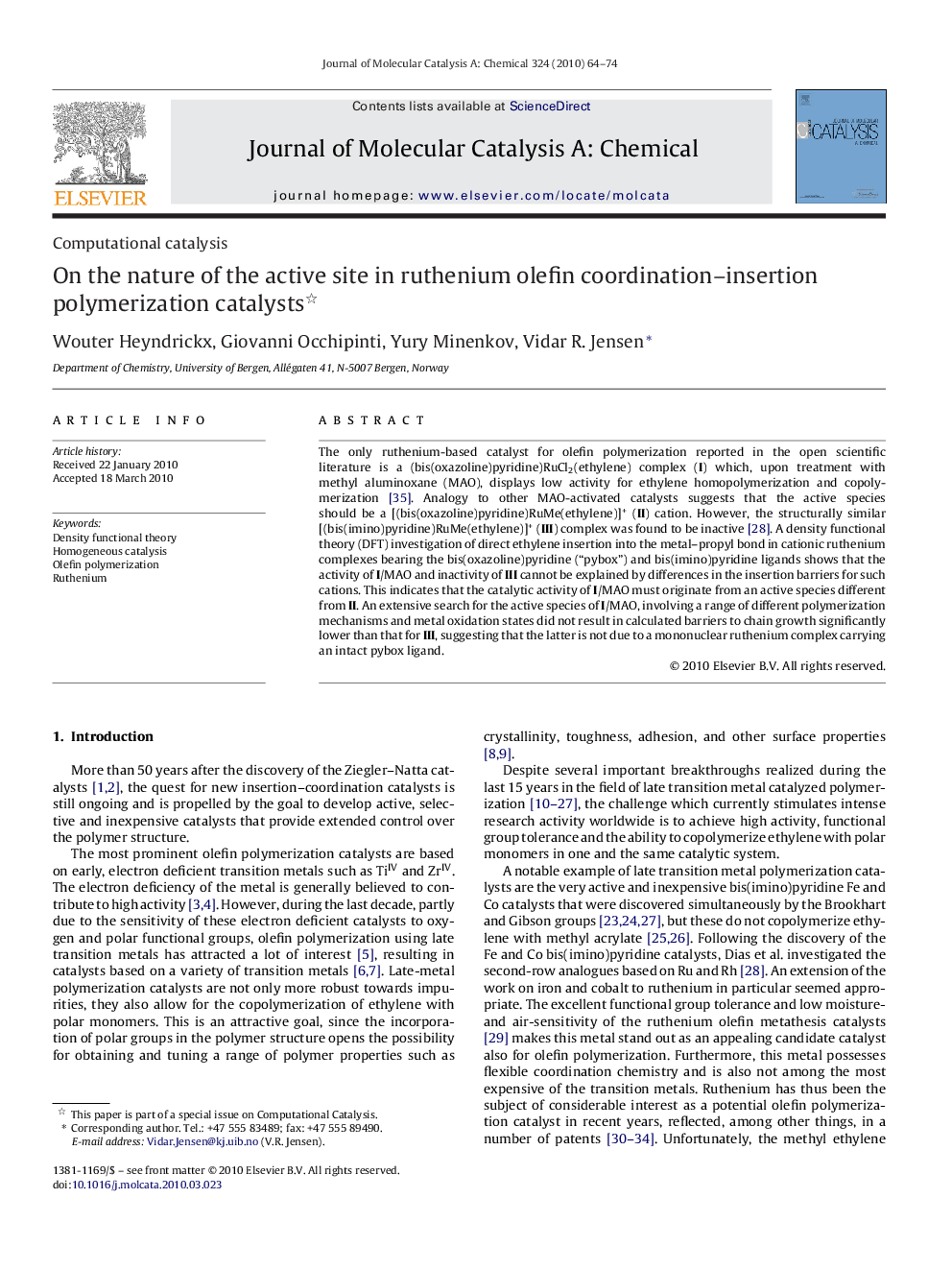| کد مقاله | کد نشریه | سال انتشار | مقاله انگلیسی | نسخه تمام متن |
|---|---|---|---|---|
| 66767 | 48449 | 2010 | 11 صفحه PDF | دانلود رایگان |

The only ruthenium-based catalyst for olefin polymerization reported in the open scientific literature is a (bis(oxazoline)pyridine)RuCl2(ethylene) complex (I) which, upon treatment with methyl aluminoxane (MAO), displays low activity for ethylene homopolymerization and copolymerization [35]. Analogy to other MAO-activated catalysts suggests that the active species should be a [(bis(oxazoline)pyridine)RuMe(ethylene)]+ (II) cation. However, the structurally similar [(bis(imino)pyridine)RuMe(ethylene)]+ (III) complex was found to be inactive [28]. A density functional theory (DFT) investigation of direct ethylene insertion into the metal–propyl bond in cationic ruthenium complexes bearing the bis(oxazoline)pyridine (“pybox”) and bis(imino)pyridine ligands shows that the activity of I/MAO and inactivity of III cannot be explained by differences in the insertion barriers for such cations. This indicates that the catalytic activity of I/MAO must originate from an active species different from II. An extensive search for the active species of I/MAO, involving a range of different polymerization mechanisms and metal oxidation states did not result in calculated barriers to chain growth significantly lower than that for III, suggesting that the latter is not due to a mononuclear ruthenium complex carrying an intact pybox ligand.
Various candidate active centers and mechanisms of ruthenium-based olefin polymerization have been investigated by means of DFT. The calculations strongly suggest that the olefin polymerization activity observed for the (bis(oxazoline)pyridine)RuCl2(ethylene)/MAO system is not due to a mononuclear ruthenium center bearing an intact bis(oxazoline)pyridine ligand.Figure optionsDownload high-quality image (66 K)Download as PowerPoint slide
Journal: Journal of Molecular Catalysis A: Chemical - Volume 324, Issues 1–2, 1 June 2010, Pages 64–74